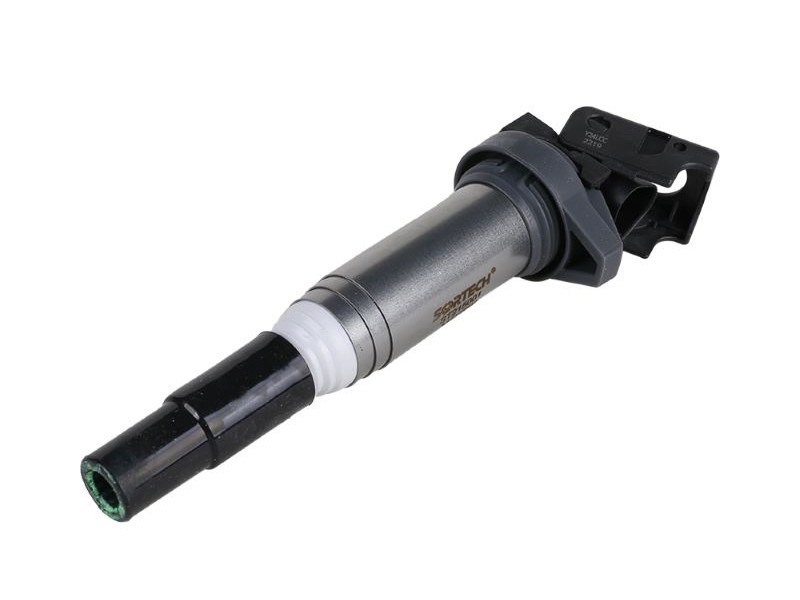For a smooth engine start and continuous, efficient operation, an essential component is the ignition coil. It's like the car's "heart power source," converting the battery's low-voltage electricity into the high-voltage current needed to ignite the fuel mixture, enabling the spark plug to produce a powerful spark and complete ignition.
Today, let's take a deeper look at the function, common troubleshooting, maintenance, and replacement precautions of the ignition coil to keep your car in top condition.
An ignition coil is also called a high-voltage coil or high-voltage transformer.
An ignition coil is essentially a transformer built using the principle of electromagnetic induction. It converts the 6-volt low-voltage current output from a battery or magneto into a high-voltage current of 11,000 to 15,000 volts.
An ignition coil primarily consists of a low-voltage coil (also called the primary coil), a high-voltage coil (also called the secondary coil), and an iron core. The low-voltage coil is wound with a relatively thick copper enameled wire and has a small number of turns. One end of the coil is connected to the power supply, and the other end is connected to the circuit breaker (breaker). The high-voltage coil is wound with numerous turns of fine copper enameled wire. One end of the coil is connected to the spark plug, and the other end is connected to the vehicle body ground.
Ignition Coil Failure Symptoms:
After long-term use, the ignition coil will gradually fail, causing a drop in ignition voltage, a weak spark from the spark plug, and insufficient ignition capacity. This can lead to unstable idling, intermittent stalling, and even difficulty starting the vehicle. 1. When an ignition coil fails and voltage is insufficient, the corresponding cylinder will stop functioning, causing the vehicle to jitter at idle, feel weak when the accelerator is pressed, and illuminate the fault light.
2. If the ignition coil leaks current, the vehicle may jitter at idle, and will definitely jitter when the accelerator is pressed, along with a lack of power.
3. When the accelerator is pressed, the ignition coil loses power, causing weak acceleration.
4. The unignited fuel mixture is discharged into the exhaust pipe. Under the high temperature of the exhaust pipe, the fuel mixture may ignite and burn, causing the three-way catalytic converter to clog and fail, and worsening emissions.
5. A faulty ignition coil can also cause increased engine vibration and a strong gasoline odor in the exhaust.

Ignition Coil Maintenance:
If an ignition coil fails, various vehicle problems will follow, making proper ignition coil maintenance extremely important. 1. Regularly clean and inspect the exterior of the ignition system to ensure the ignition coil housing is free of oil, dust, and loose terminals. This prevents short circuits or grounding, helps control engine performance, and prevents overvoltage.
2. Protect the ignition coil from heat and moisture to maintain good insulation and create a good working environment for the ignition system. Moisture on the ignition coil should only be wiped dry with a cloth; never use fire to dry it, as this will damage the ignition coil.
3. Do not turn on the ignition switch when the engine is not running to avoid unnecessary consumption. Even if there are no faults, it is generally recommended to inspect the vehicle approximately every 20,000 kilometers and replace it after reaching its service life.
Ignition Coil Replacement Precautions:
1. Verify the Vehicle's Power Supply Voltage and High-Voltage Cables
Before replacing an ignition coil, ensure that the vehicle's power supply voltage is normal and that the high-voltage cables are not faulty. Operating the ignition coil in a faulty state will increase the load on the ignition coil, shortening its service life and even causing it to rupture. 02. Check for spark plug malfunctions:
After removing the faulty ignition coil, first confirm that the spark plug is faulty. Using a faulty spark plug will increase the load on the ignition coil. When installing the spark plug, ensure that it is securely connected to the cylinder.
If the spark plug is misaligned, it could burn the high-voltage protective sleeve on the ignition coil housing or even catch fire.
3. Clean the cylinder:
Before installing a new ignition coil, clean the cylinder. Vehicles with severe oil leaks should be reminded to clean the cylinder regularly.
Oil leaks are a major threat to ignition coils, causing degradation of the high-voltage protective sleeve and shortening the coil's lifespan. In severe cases, they can even cause cylinder failure, electrical leakage, detonation, or fire.
4. Check the coil connector, ejector pins, and socket for damage.
When replacing an ignition coil, inspect the connector, ejector pins, and socket to ensure they are free of damage, cracks, or deterioration. Normal engine operation generates high temperatures, but high temperatures can easily degrade the connectors, preventing them from tightening properly, leading to malfunction, vehicle shaking, and intermittent malfunctions.
05. Clearing ECU Fault Codes:
After replacing an ignition coil, you need to clear the ECU fault codes. Because the parameters of the new coil and the faulty coil differ significantly, the ECU may mistake the faulty coil for the new coil, potentially damaging the new coil. Therefore, please perform a data reset after installation.
Tips:
It is recommended to replace all ignition coils at once. Replacing only the faulty coil increases the risk of damage to the new coil.
Similar to replacing the entire set of spark plugs at the same time, the lifespan of ignition coils from the same batch varies minimally. If one fails, the other three are likely to be replaced soon. Paying careful attention to maintenance details will not only improve your driving experience but also avoid unnecessary repair costs.
We will continue to share more information on the use and maintenance of automotive parts to help you feel more secure and worry-free during your daily driving. Next time, we'll discuss engine systems, chassis systems, or other automotive trivia you're interested in.

